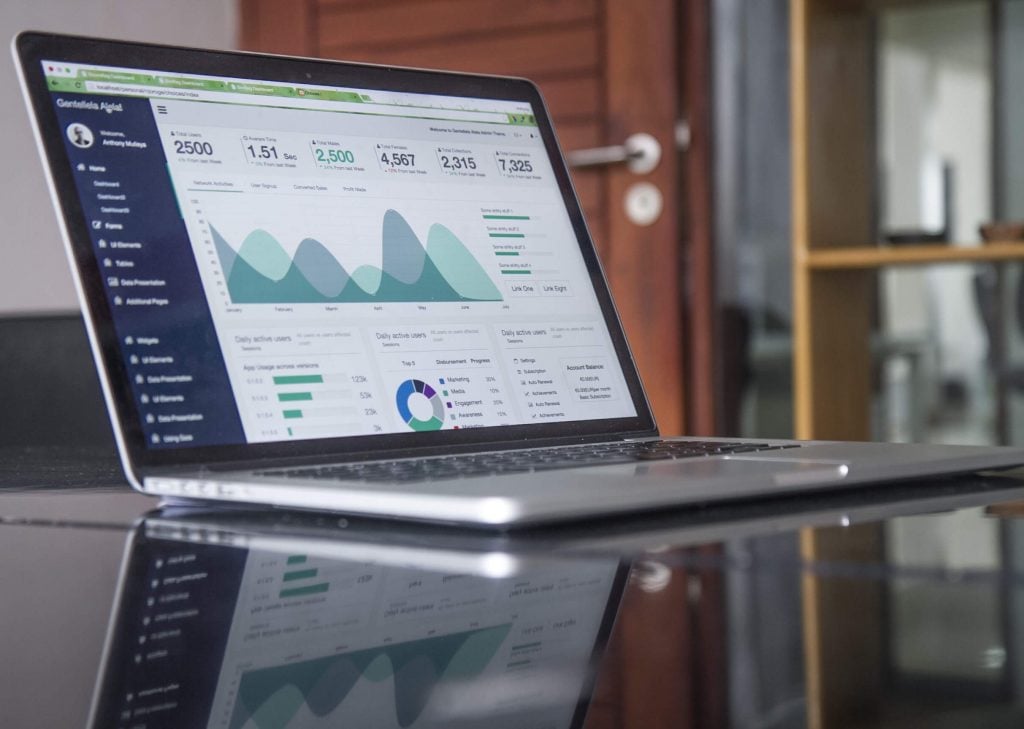Here’s how to crank up your website performance: drive traffic and forge stronger connections
We're living in the digital age - that's a given. For a B2B businesses, a website needs to be more than a marketing cost — it should be a revenue-generating asset. It should boost brand visibility, extend marketing reach, deepen customer engagement, streamline operations, provide insights that drive growth and adaptability, and above all help generate demand for your offerings.
How do you maximise your website performance when almost every B2B business has one? What do you need to do to be heard above the noise?
In a world where 80% of B2B buyers begin their buying journey online, the challenge lies in making your website work for you — driving traffic, encouraging engagement, and standing out in a saturated online marketplace.
Let's take a closer look at what you need to measure and how to improve your website's performance - one that not only attracts visitors but also converts them into lasting connections.
Making your B2B website stand out - visibility, value, and the visitor experience
Your website is live — well done. But now comes the tricky part: getting noticed in a sea of online content. It's not just about having a sleek design (though aesthetics are important); it’s about being found and providing value to the user. Here’s how to make sure your B2B website doesn’t just exist — it excels.
Maximise SEO for visibility
If people can’t find your website, it’s like it doesn’t exist. SEO (search engine optimisation) is your best friend here. Are you ranking on page 1 of search engines for the key questions your potential customers are asking? If not, it’s time to get to work on your SEO strategy. Your goal is to make sure that when someone’s searching for solutions to their problems, your website is the first thing they see.
Content that connects
Getting people to your site is just the beginning. Once they’re there, you need to show them that you really get them. It’s not just about showcasing your products or services — it’s about offering content that guides them through their buying journey. This could be thought leadership pieces that demonstrate your expertise, or resources that help them solve their challenges. Remember, it’s not about selling right away; it’s about helping them see that you understand their needs better than anyone else.
Keep it user-friendly
Finally, make sure your website isn’t just pretty to look at, but also a joy to use. Think of it like inviting someone to your house — you want it to be clean, easy to navigate, and welcoming. If your visitors can’t find what they’re looking for or if your site’s design looks outdated, they’ll quickly move on to the next option. A smooth user experience is essential to keeping them engaged and interested in what you have to offer.
Key metrics to measure for website performance - from traffic to conversion
Now you’ve got a website that’s visible, engaging, and easy to navigate how do you know if it’s actually working? That’s where key metrics come into play. Think of these as your website’s vital signs. They tell you how healthy your online presence is and where you might need to give it a little extra TLC. Let’s break down the five metrics you should be keeping an eye on.
- Traffic - the digital footfall
Traffic is the most basic measure of your website’s popularity. How many people are stopping by? But don’t just look at the numbers — dig a little deeper. Where are your visitors coming from? Are they finding you through search engines, paid media, social media, or direct visits? Knowing this can help you figure out what’s driving your traffic and where you might need to focus your efforts. - Conversions - turning visitors into leads
Conversions are the holy grail of website metrics. Out of all the visitors landing on your site, how many are taking that crucial next step — whether it’s filling out a form, signing up for a newsletter, or requesting a demo? This is where the rubber meets the road. If your traffic is high but conversions are low, it’s a sign that something isn’t clicking with your audience. Time to tweak your CTAs, rethink your content, or perhaps streamline the user experience. - Dwell time - making a lasting impression
Dwell time measures how long visitors hang out on your site before they decide to move on. The longer, the better. If people are spending time exploring your content, it’s a good sign that they’re finding it valuable. But if they’re bouncing after a few seconds, you might not be meeting their expectations. Ask yourself, is your content engaging? Are you answering the questions they came with? - Bounce rate - the quick exit stat
Bounce rate is the percentage of visitors who leave your site after viewing just one page. A high bounce rate can be a red flag, indicating that visitors aren’t finding what they’re looking for — or that your website is slow, confusing, or just plain unappealing. It’s like throwing a party and having everyone leave before the appetisers are even served. Lowering your bounce rate often means improving your content, page load speed, and overall user experience. - Pages visited per session - the exploration metric
This metric tells you how many pages a visitor explores before they leave your site. More pages visited usually means a more engaged audience — one that’s interested in what you have to offer. If this number is low, it might be a sign that your navigation needs improvement, or that your content isn’t compelling enough to keep people clicking through.
HubSpot - your metric-measuring mate
HubSpot's intuitive dashboard centralises all the key metrics — traffic, conversions, dwell time, bounce rate, and pages visited per session — making it easy to track and understand how your website is performing. Whether you're a seasoned pro or new to digital marketing, HubSpot simplifies the process by providing clear, actionable insights. Not only does it show who’s visiting your site and how they're interacting with it, but you also have some control; you can make changes on the fly without relying on a third party. Need to swap out an image, update a headline, or tweak content? With HubSpot you can do that quickly and easily, so you're not stuck waiting for someone else to make those updates. Plus, with robust security features, you can trust that your data — and your website — are in good hands. It’s like having a cheat sheet for your website's success, with the added bonus of total control.
How to improve website traffic – the long and the short game
Driving traffic to your B2B website is a bit like playing chess — there’s strategy, patience, and a dash of calculated risk involved. Let’s break it down into two approaches: the long game, where you’re building a sustainable presence, and the short game, where you’re putting your brand out there, loud and proud.
- The three pillars of SEO - content, linking, and technical
To really improve your website traffic, you need to understand the three pillars of SEO:- Content - high-quality, relevant content that answers the questions your audience is searching for.
- Linking - building a network of internal links on your site and gaining valuable external links from other reputable sites.
- Technical - making sure your website is technically sound — fast loading times, mobile-friendly design, and a clean, crawlable structure for search engines.
With these strategies, you’ll be able to play both the long and short game, driving traffic to your B2B website in a way that’s both effective and enduring.
- The long game - SEO and content, a.k.a. 'owned media’
Think of SEO and content as the foundations of a solid house. They take time to build, but once they’re up, they’re rock solid. Owned media is content you create and control — blogs, landing pages, resources, you name it. To master the long game:
-
- Create quality content - focus on topics that resonate with your audience, answer their questions, and solve their problems. Consistency is key here —regular blog posts, updated landing pages, and valuable resources keep your website fresh and engaging.
- Optimise for SEO - work on the three pillars of SEO — content, linking, and technical. Your content should be relevant and packed with keywords your audience is searching for. Internal and external links help build your site’s authority, while technical SEO makes sure your site is crawlable, fast, and user-friendly.
When we talk about organic traffic, we’re not referring to anything green or leafy. In the digital world, 'organic' simply means natural — traffic that comes to your website without the influence of paid ads. Picture it like this: someone is sitting at their desk, pondering a problem, and they type a question into Google. Through the magic of search engines and your finely-tuned SEO, they land on your website. That’s organic search traffic — a key player, often making up 30% to 40% of your total traffic. This long game is your organic growth engine. When you see traffic from organic search results, it’s a pat on the back from search engines saying, “Hey, your site’s doing something right.”
- The short game - paid promotion on bought and borrowed channels
Sometimes, you need a little extra push to get the ball rolling, and this is where the short game comes into play. It’s about leveraging paid and borrowed channels to drive immediate traffic:
-
- Paid ads - invest in Google Ads, LinkedIn Sponsored Content, or social media ads. These platforms let you target specific demographics, so your message reaches the right eyes.
- Borrowed media - think guest blogging, influencer partnerships, and social media shoutouts. You’re borrowing someone else’s audience to get your message across, giving your website a quick traffic boost.
While these tactics can spike traffic in the short term, remember they’re just that — short-term. The true test of your website’s performance is how well it does when left to its own devices (i.e., organic traffic).
Elevate your B2B website to drive real results
As you can see, having a website is just the beginning. To truly harness its power, you need to be actively managing and optimising its performance. Here’s a quick recap of what you need to do:
- Stand out in a crowded market - make sure your site is visible and valuable by focusing on SEO and delivering high-quality content that meets your audience’s needs.
- Measure what matters - keep track of key metrics like traffic, conversions, dwell time, and bounce rate to understand how well your website is performing.
- Boost organic traffic - improve your site’s organic reach through effective SEO and engaging social media presence.
- Optimise conversions - implement best practices for CRO, including compelling headlines, clear CTAs, A/B testing, and multiple lead-generation options.
Your website should be an active, dynamic tool that adapts to your audience’s needs and evolves with your business. Make the most of it, and you'll turn it into a powerful engine for growth and engagement.
If you’d like to hear from the experts about how CRM-driven websites support revenue growth, check out our on-demand webinar. Watch here.
Share this
You May Also Like
These Related Stories

2023 B2B Marketing Benchmarks

Feed the backs!

.png?width=812&height=271&name=B2B%20benchmarks%20(5).png)